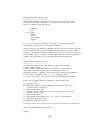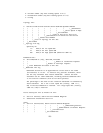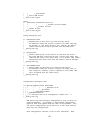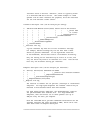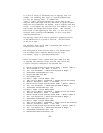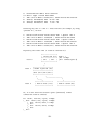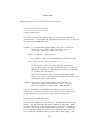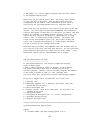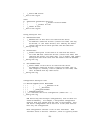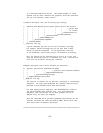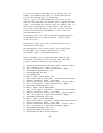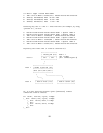x = hexadecimal number (may have leading spaces or 0’s)
s = string
Topology info:
T: Bus=dd Lev=dd Prnt=dd Port=dd Cnt=dd Dev#=ddd Spd=ddd MxCh=dd
| | | | | | | | |__MaxChildren
| | | | | | | |__Device Speed in Mbps
| | | | | | |__DeviceNumber
| | | | | |__Count of devices at this level
| | | | |__Connector/Port on Parent for this device
| | | |__Parent DeviceNumber
| | |__Level in topology for this bus
| |__Bus number
|__Topology info tag
Speed may be:
1.5 Mbit/s for low speed USB
12 Mbit/s for full speed USB
480 Mbit/s for high speed USB (added for USB 2.0)
Bandwidth info:
B: Alloc=ddd/ddd us (xx%), #Int=ddd, #Iso=ddd
| | | |__Number of isochronous requests
| | |__Number of interrupt requests
| |__Total Bandwidth allocated to this bus
|__Bandwidth info tag
Bandwidth allocation is an approximation of how much of one frame
(millisecond) is in use. It reflects only periodic transfers, which
are the only transfers that reserve bandwidth. Control and bulk
transfers use all other bandwidth, including reserved bandwidth that
is not used for transfers (such as for short packets).
The percentage is how much of the "reserved" bandwidth is scheduled by
those transfers. For a low or full speed bus (loosely, "USB 1.1"),
90% of the bus bandwidth is reserved. For a high speed bus (loosely,
"USB 2.0") 80% is reserved.
Device descriptor info \& Product ID info:
D: Ver=x.xx Cls=xx(s) Sub=xx Prot=xx MxPS=dd #Cfgs=dd
P: Vendor=xxxx ProdID=xxxx Rev=xx.xx
where
D: Ver=x.xx Cls=xx(sssss) Sub=xx Prot=xx MxPS=dd #Cfgs=dd
| | | | | | |__NumberConfigurations
| | | | | |__MaxPacketSize of Default Endpoint
| | | | |__DeviceProtocol
| | | |__DeviceSubClass
| | |__DeviceClass
217



